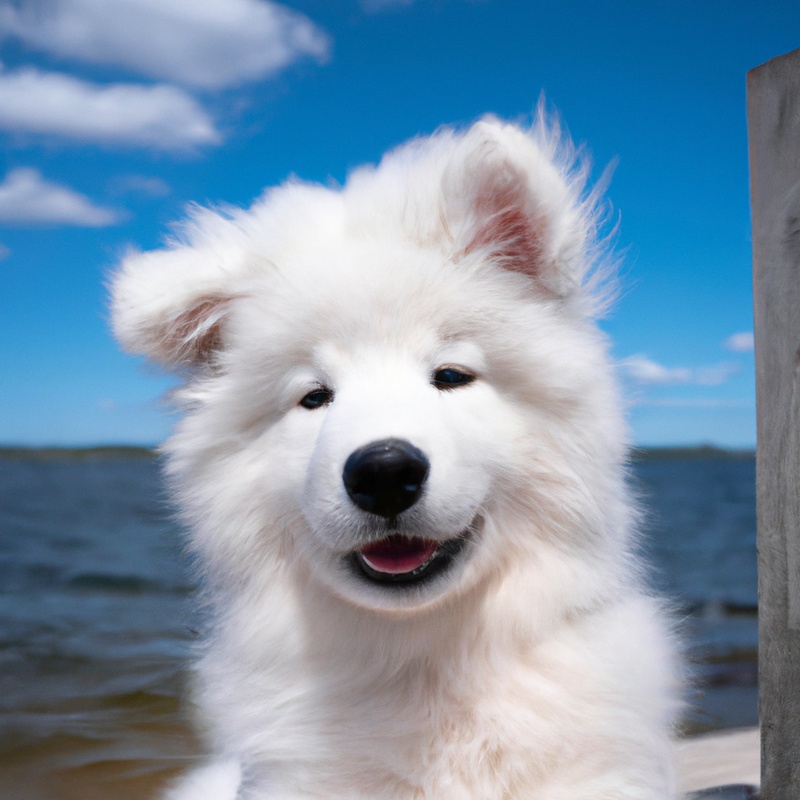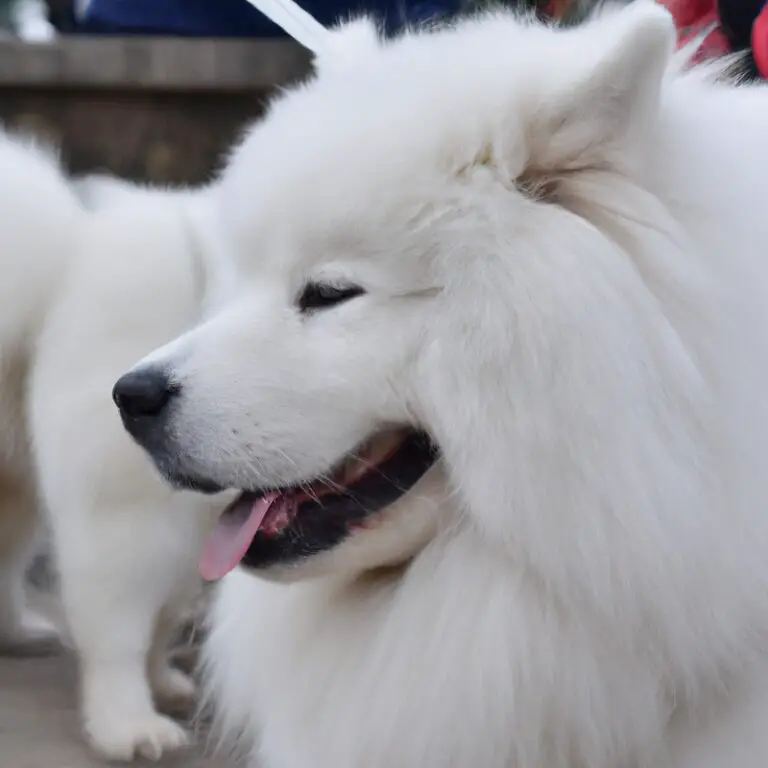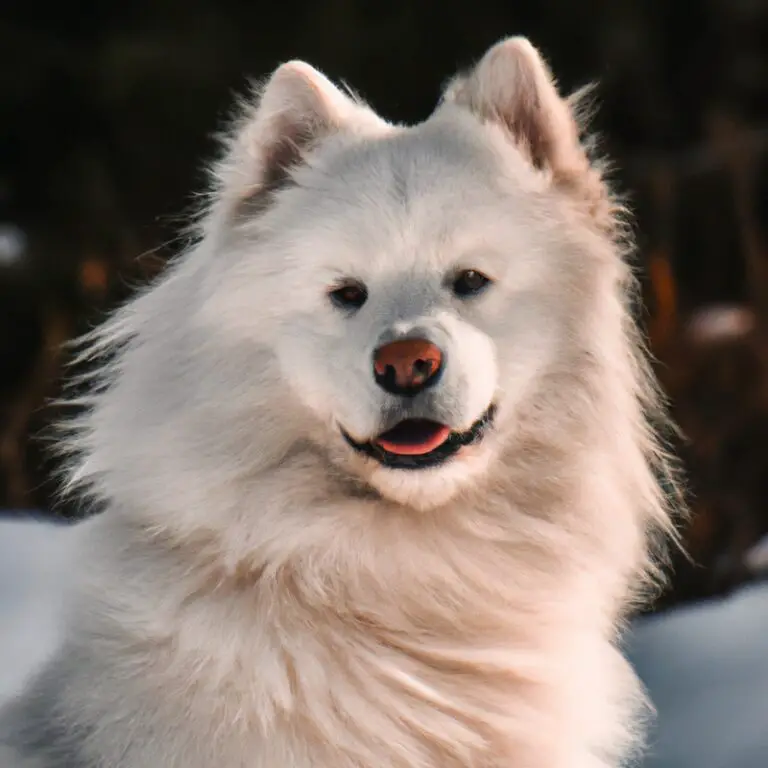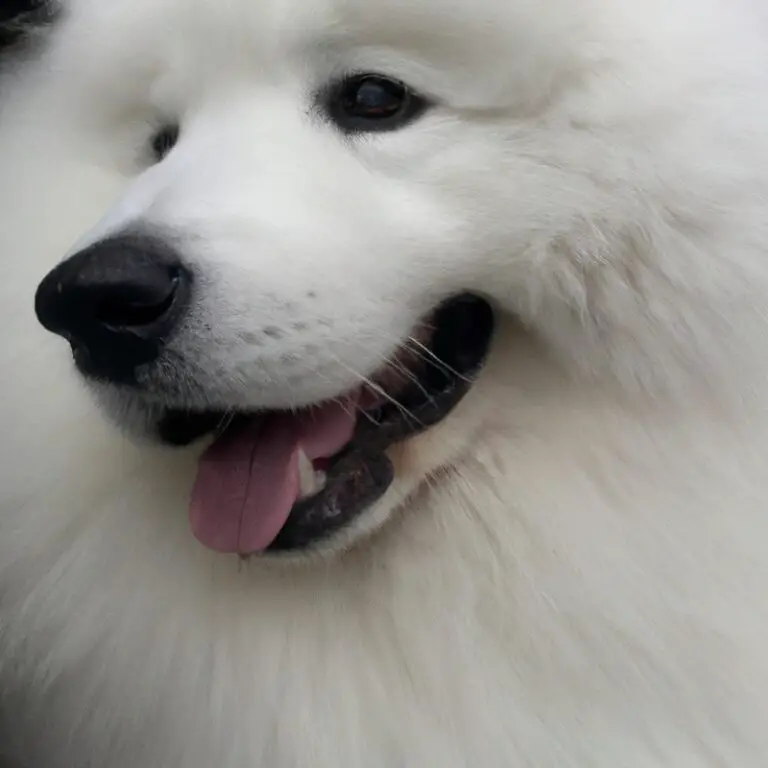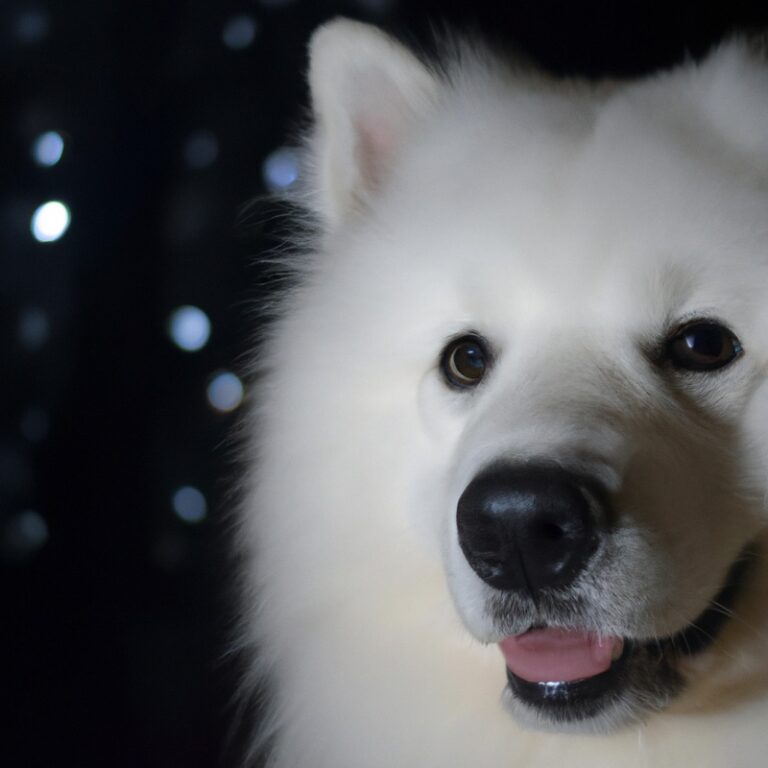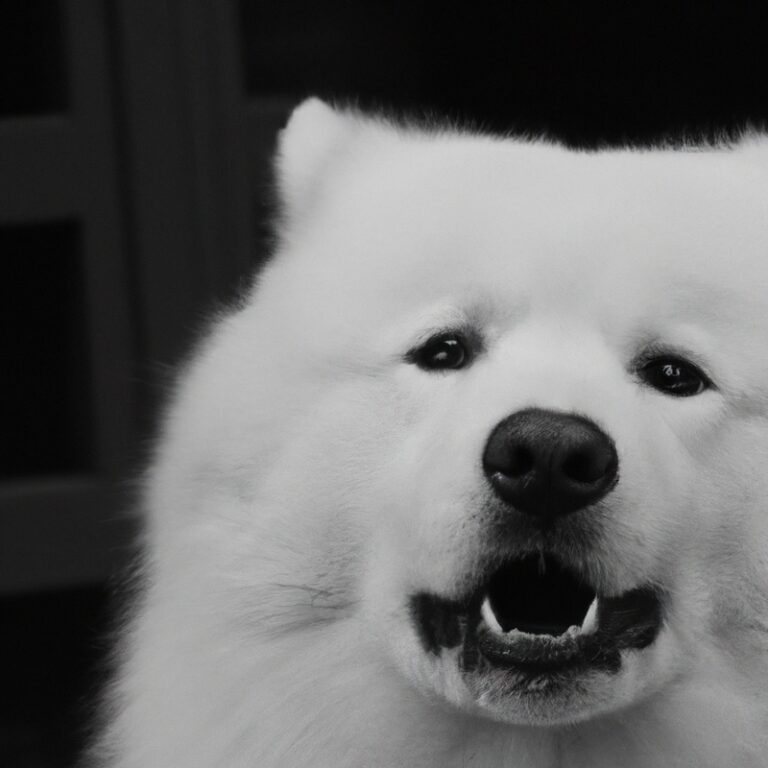How To Create a Safe Space For a New Samoyed Puppy?
Key Takeaways:
- Establish a designated area for your Samoyed puppy to retreat to when they need privacy or calm.
- Provide plenty of toys and activities to keep your Samoyed entertained and engaged, reducing the likelihood of destructive behavior.
- Consistent routines and positive reinforcement will help your Samoyed feel secure and well-behaved.
- Always supervise interactions between your Samoyed puppy and other animals or children to ensure safety for all involved.
Imagine bringing home a fluffy, adorable Samoyed puppy.
Excitement fills the air as you picture all the fun adventures ahead.
But amidst the joy, have you stopped to consider how you can create a safe space for your new furry friend?
As an experienced dog owner and Samoyed enthusiast, I understand the importance of providing a secure environment for these playful and inquisitive creatures.
In this article, I will guide you through the steps of creating a safe space, establishing a routine, and implementing training and socialization techniques to ensure your Samoyed puppy’s safety and happiness.
Let’s dive in!
| Aspect | Tips |
| Secure the environment |
|
| Create a designated safe space |
|
| Puppy-proof the house |
|
| Establish a routine |
|
| Supervision and training |
|
Why creating a safe space is important for a new Samoyed puppy
Providing a secure environment for your Samoyed puppy
To provide a secure environment for your Samoyed puppy, it’s important to focus on a few key areas. Firstly, ensure that your home is puppy-proofed by removing any potential hazards such as toxic plants or small objects that they could swallow.
Secondly, create a designated safe space for your puppy where they can retreat and feel comfortable.
This could be a crate or a specific room with their bed, toys, and water. Finally, establish a consistent routine for feeding, exercise, and potty breaks to help your puppy feel secure and understand what is expected of them.
By addressing these aspects, you can create a safe and nurturing environment for your Samoyed puppy.
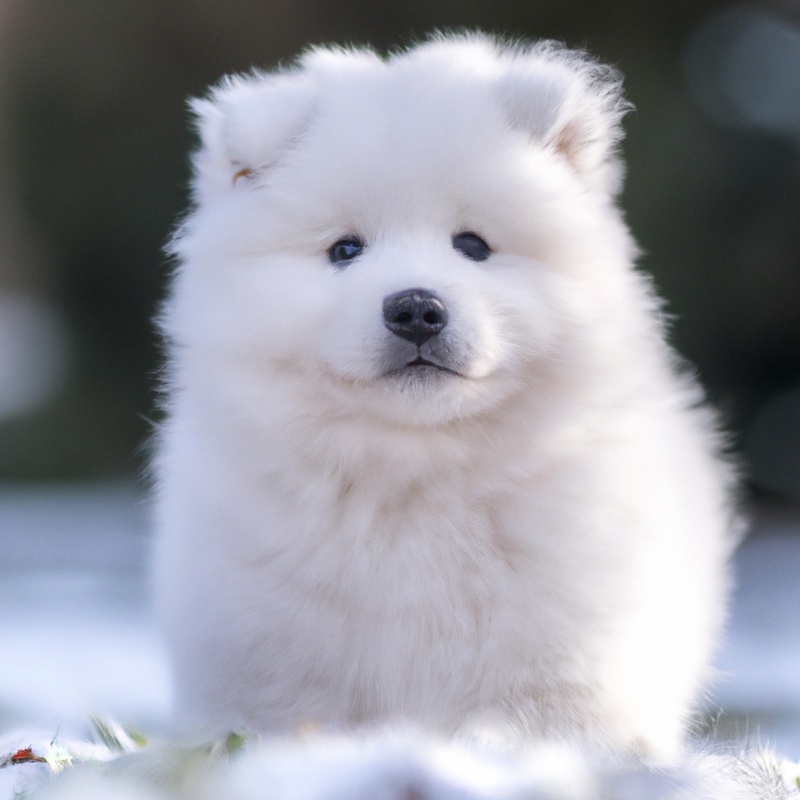
Designating a specific area for your puppy
To create a safe space for your new Samoyed puppy, it’s important to designate a specific area just for them. This gives them a sense of security and helps with potty training.
Choose an area that is easily accessible, quiet, and free from hazards.
Use baby gates to create boundaries and make sure to include a comfortable bed, water, and appropriate toys. Regularly supervise your puppy in this area to ensure their safety and provide them with a positive experience.
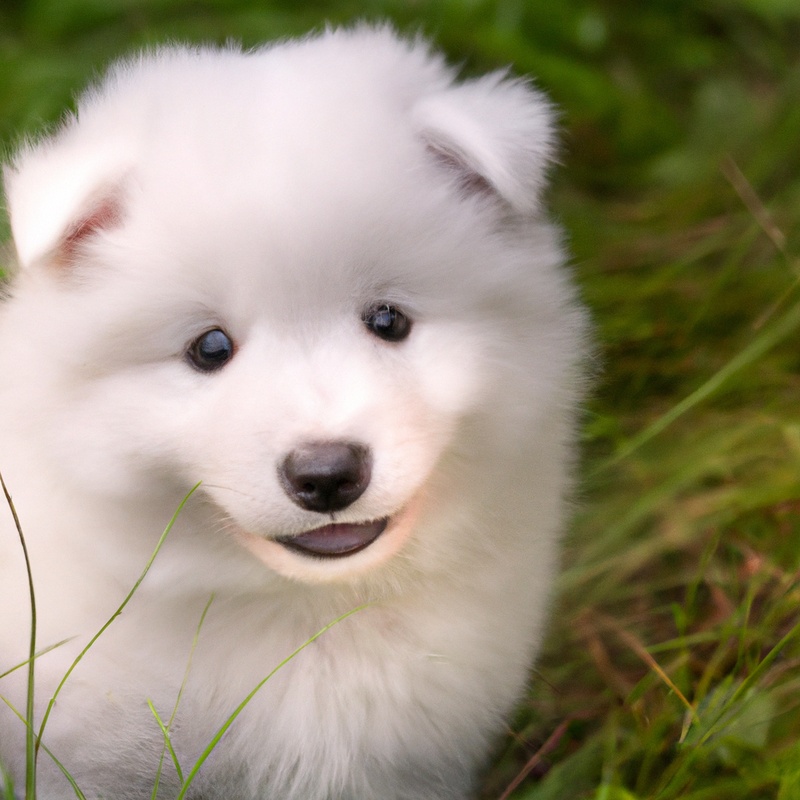
Removing potential hazards within the space
To create a safe space for your new Samoyed puppy, it’s important to remove any potential hazards within the area.
Here are a few things you can do:
- Store chemicals, cleaning products, and medications out of reach.
- Keep electrical cords and wires secure and out of chewing range.
- Remove small objects, such as toys or decorations, that could be swallowed.
- Secure windows and doors to prevent escapes.
- Cover or secure any gaps or openings that your puppy could get stuck in.
- Keep plants, especially toxic ones, out of reach.
By taking these precautions, you’ll be able to provide a safe environment for your new furry friend.
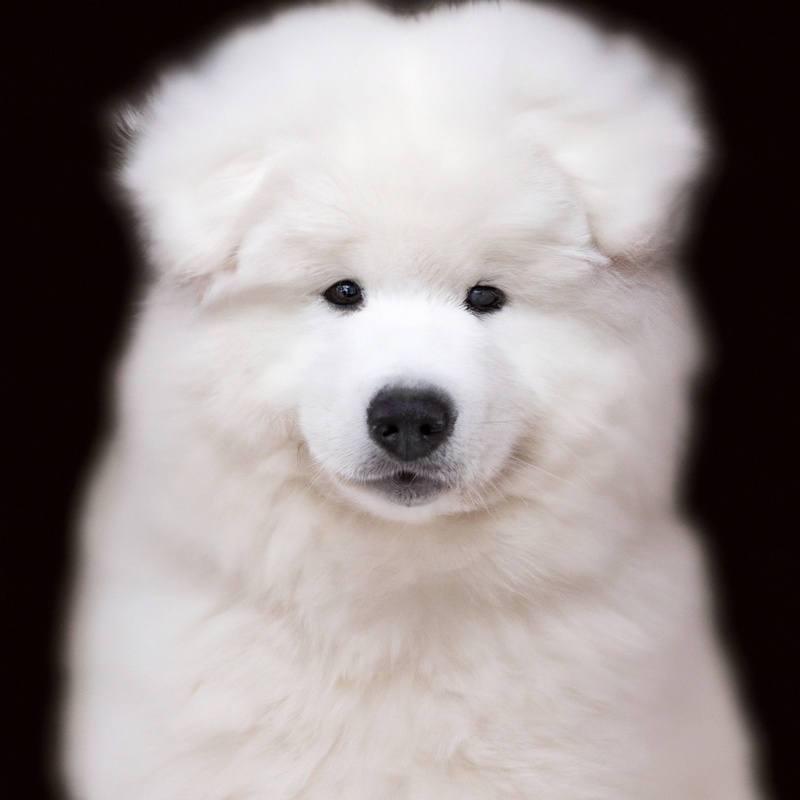
Choosing suitable bedding and toys
Choosing suitable bedding and toys for your new Samoyed puppy is essential for their comfort and safety. Opt for a soft and washable bed that provides enough space for them to stretch out and relax.
Avoid beds with stuffing that can be easily chewed and swallowed.
When selecting toys, prioritize those made specifically for puppies, as they are designed to be safe and durable. Look for toys that are easy to chew and don’t have small parts that could be a choking hazard.
By considering these factors, you can create a safe and enjoyable environment for your furry friend.
Setting up a comfortable crate or playpen
To set up a comfortable crate or playpen for your new Samoyed puppy, make sure to choose the right size. Provide soft bedding to make it cozy and inviting.
Add some toys and chew treats to keep your puppy entertained.
Place the crate or playpen in a quiet area of your home, away from loud noises. Make sure it’s well-ventilated and has enough room for your puppy to move around.
Creating a routine for your Samoyed puppy’s safety
Establishing a feeding schedule
Establishing a feeding schedule for your Samoyed puppy is important to ensure their wellbeing.
Here’s how you can do it:
- Determine the appropriate amount of food for your puppy based on their age, size, and activity level. Consult your veterinarian if you’re unsure.
- Divide the total daily amount of food into 2-3 meals. This helps prevent overeating and aids digestion.
- Set specific meal times and stick to them. Consistency is key for establishing a routine and promoting healthy eating habits.
- Create a designated feeding area where your puppy can eat without distractions. This helps them focus on their food and prevents resource guarding.
- Use feeding time as an opportunity to bond with your puppy. Sit with them during their meal and give them verbal praise for good behavior.
- Avoid leaving food out for your puppy to graze on throughout the day. This can lead to overeating and potential weight gain.
Implementing a consistent exercise routine
Implementing a consistent exercise routine for your Samoyed puppy is essential for their physical and mental well-being. Start with short, frequent walks to gradually build their endurance.
Incorporate playtime in the yard or at a dog park to give them a chance to run and burn off energy.
Mix up their exercise routine with activities like fetch, agility training, or swimming to keep them engaged. Remember to adjust the intensity of the exercise based on your puppy’s age and health.
Regular exercise will contribute to a happy and healthy Samoyed.
Setting up regular potty breaks
Setting up regular potty breaks is essential for your Samoyed puppy’s well-being and house training.
Here’s how you can do it:
- Establish a consistent schedule: Take your puppy outside to eliminate at specific times throughout the day, such as after meals, naps, and playtime.
- Use a designated potty area: Choose a spot in your yard where you want your puppy to go. The familiarity will help them understand where they should do their business.
- Monitor their behavior: Watch for signs that your puppy needs to go, like sniffing, circling, or squatting. Immediately take them to the designated area when you notice these signs.
- Praise and reward: When your puppy successfully goes potty outside, praise them and offer a small treat. Positive reinforcement will reinforce the behavior you want.
- Be patient: Remember, accidents are bound to happen during the training process. Stay consistent, and your puppy will learn to associate going outside with potty breaks. Just keep at it!
Ensuring a quiet and calm sleeping environment
To ensure a quiet and calm sleeping environment for your Samoyed puppy, there are a few things you can do:
- Find a cozy and secluded spot: Choose a comfortable area in your home where your puppy can sleep undisturbed – away from loud noises and foot traffic.
- Create a peaceful atmosphere: Dim the lights and play soft, soothing music to help your puppy relax and fall asleep easily.
- Use a comfy bed: Provide a soft and supportive bed specifically designed for dogs. This will help your puppy feel secure and comfortable during sleep.
- Maintain a consistent routine: Establish a regular bedtime routine for your puppy, including feeding, potty breaks, and playtime. This will help signal that it’s time for sleep.
- Minimize interruptions: Keep disturbances to a minimum during your puppy’s sleep time. Avoid loud activities or sudden noises that may startle or wake them up.
- Keep the temperature comfortable: Ensure that the room is neither too hot nor too cold for your puppy. Maintain a temperature that is comfortable for them to sleep in.
By implementing these tips, you can create a peaceful and quiet sleeping environment for your Samoyed puppy, promoting their overall well-being and restful sleep.
Training and socialization for a safe environment
Teaching basic commands for safety
Teaching basic commands to your new Samoyed puppy is essential for their safety. Start with commands like “sit,” “stay,” and “come,” using positive reinforcement techniques.
Use treats and praise to reward your puppy when they perform the command correctly.
Practice these commands in different environments and gradually increase distractions to ensure they respond reliably. Additionally, teaching “leave it” and “drop it” commands can prevent them from eating harmful objects.
Consistency and patience are key when training your puppy these basic commands.
Introducing positive reinforcement techniques
Positive reinforcement is a powerful technique for training your new Samoyed puppy. Here are some tips to introduce it effectively:
- Reward good behavior: Use treats, praise, and petting to reward your puppy when they behave appropriately.
- Timing is everything: Make sure to reward your puppy immediately after they display the desired behavior. This helps them make the connection between the action and the reward.
- Be consistent: Consistency is key. Use positive reinforcement consistently to reinforce good behavior and discourage unwanted behaviors.
- Use a marker: A clicker or a specific word like “yes” can act as a marker to let your puppy know when they’ve done something right. This helps them understand what behavior is being rewarded.
- Start small: Begin with simple commands and gradually increase the difficulty as your puppy progresses. This allows them to build confidence and understand expectations.
Remember, positive reinforcement builds a strong bond between you and your puppy while creating a safe and positive learning environment.
Socializing your Samoyed with people and other animals
To ensure your Samoyed puppy learns to socialize well with people and other animals, there are a few key things you can do.
- Start early: Begin socializing your Samoyed as soon as you bring them home. Introduce them to new people, places, and animals in a positive and controlled manner.
- Positive experiences: Make sure each social interaction is a positive one. Reward your Samoyed with treats and praise for calm and friendly behavior.
- Gradual exposure: Gradually increase the level of exposure to different people and animals. Start with calm and trusted individuals, then move on to more unpredictable environments and interactions.
- Puppy classes: Enroll your Samoyed in puppy classes or socialization groups to provide structured and supervised opportunities for interaction with other dogs and people.
- Consistency: Be consistent and patient with your Samoyed. Slowly and steadily expose them to new experiences, and reward good behavior consistently.
Remember, socialization is an ongoing process. By taking the time to properly socialize your Samoyed, you can help them become a well-adjusted and social member of your family.
Frequently asked questions (FAQs)
How long does it take for a Samoyed puppy to adjust to a new home?
A Samoyed puppy usually takes around two to three weeks to adjust to a new home.
During this time, it’s important to provide a safe and comfortable space for them, establish a routine, and give them plenty of love and attention.
Be patient and understanding as they settle in, and gradually introduce them to new experiences and environments.
Remember, each puppy is unique, so the timeframe may vary slightly.
Can I use baby gates to create a safe space for my Samoyed puppy?
Yes, you can use baby gates to create a safe space for your Samoyed puppy. Baby gates are a practical way to restrict your puppy’s access to certain areas of your home and keep them safe.
Make sure the baby gate is secure and sturdy, as Samoyed puppies can be quite active and curious.
It’s also important to provide a comfortable and cozy space within the gated area, including a bed, toys, and water. Regularly supervise your puppy even within the safe space to ensure their safety.
Should I allow my Samoyed to have free roam of the entire house?
Allowing your Samoyed to have free roam of the entire house may not be the best idea. It’s important to create a safe space for your puppy to prevent accidents and keep them out of trouble.
Start by setting up a designated area with a comfortable bed, toys, and water.
Gradually expand their access to other areas of the house as they become more familiar with the rules and boundaries. Supervision is key, especially during the early stages of training.
What types of toys are safe for Samoyed puppies?
When choosing toys for your Samoyed puppy, opt for those that are durable and safe.
Look for toys made of non-toxic materials such as rubber or rope.
Avoid small toys that can be easily swallowed, as well as toys with sharp edges or detachable parts that could pose a choking hazard.
Chew toys, puzzle toys, and interactive toys are great options to keep your Samoyed puppy entertained while promoting mental stimulation and good oral health.
Remember to supervise your puppy during playtime to ensure their safety.
Final Verdict
Creating a safe space for a new Samoyed puppy is crucial for their well-being and development.
By designating a specific area, removing hazards, and choosing suitable bedding and toys, we can ensure their safety.
Establishing a routine with consistent feeding, exercise, potty breaks, and a calm sleeping environment further contributes to their security.
Additionally, training and socialization play a key role in creating a safe environment by teaching basic commands, using positive reinforcement techniques, and introducing them to various people and animals.
Overall, by following these guidelines, we can provide a secure and nurturing space for our Samoyed puppies to thrive.

